Elevated walkways transform outdoor spaces by adding both functional pathways and striking architectural elements above ground level. These raised structures solve common landscaping challenges while creating visual interest and protecting delicate terrain beneath. From rustic wooden boardwalks meandering through gardens to sleek steel platforms connecting building sections, elevated walkways offer endless design possibilities. Modern homeowners increasingly choose these solutions for wet areas, sloped landscapes, and spaces requiring minimal ground disturbance. Whether spanning water features, navigating uneven terrain, or simply adding dramatic height variation, elevated walkways combine practical accessibility with stunning aesthetic appeal for any property.
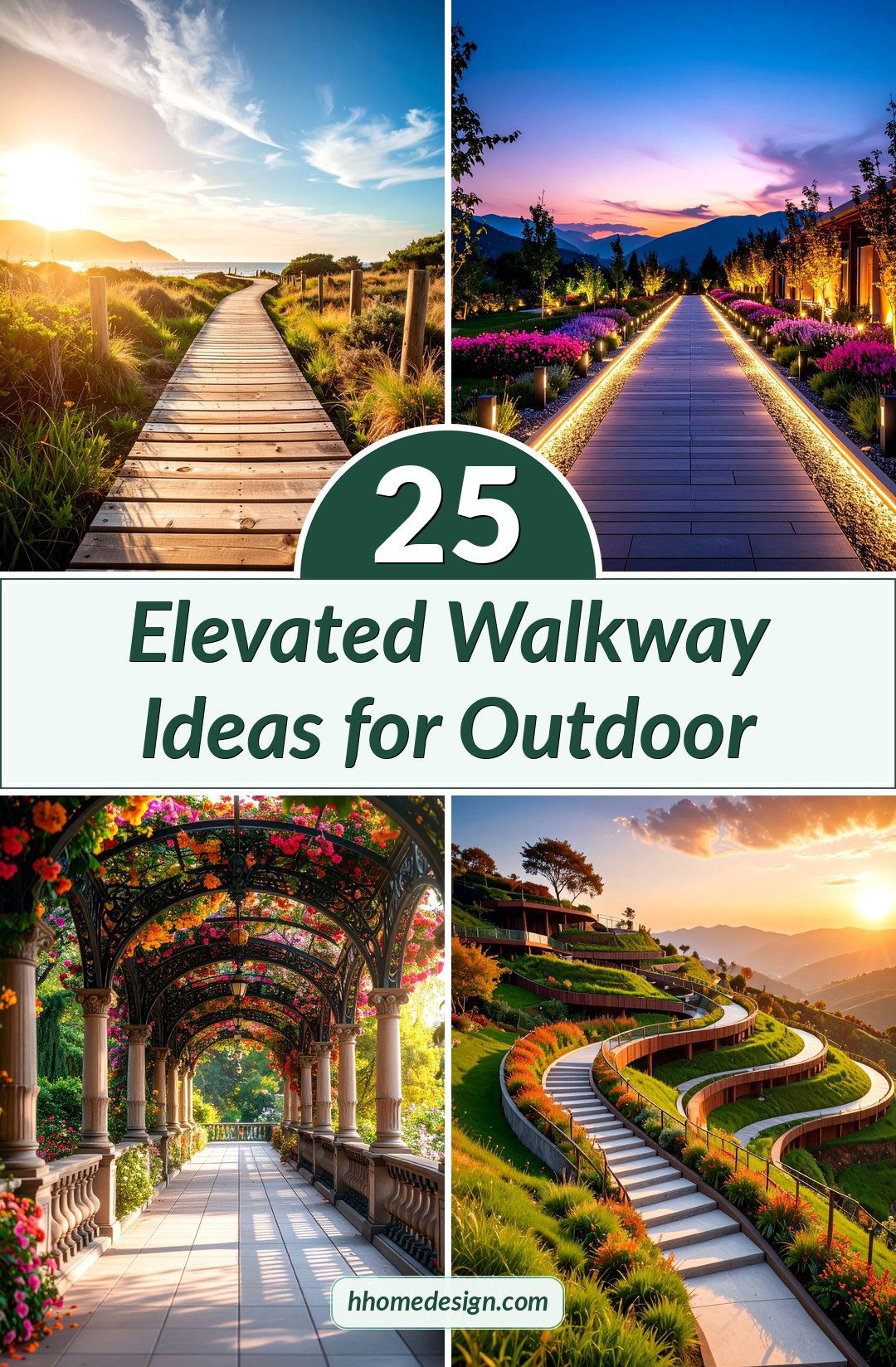
1. Rustic Wooden Boardwalk with Natural Railings

This charming elevated walkway embraces natural materials and organic design principles throughout its construction. The boardwalk features pressure-treated lumber decking supported by sturdy posts, creating a pathway that sits comfortably above ground level. Natural wood railings complement the rustic aesthetic while providing essential safety features. The design incorporates gentle curves that follow the landscape's natural contours, making the walkway feel like an organic extension of the environment. Weathered finishes and earth-tone stains help the structure blend seamlessly with surrounding vegetation. This approach works particularly well in woodland settings, garden paths, and areas where maintaining a natural, unobtrusive appearance is important for the overall landscape design.
2. Steel Industrial Catwalk with Safety Features
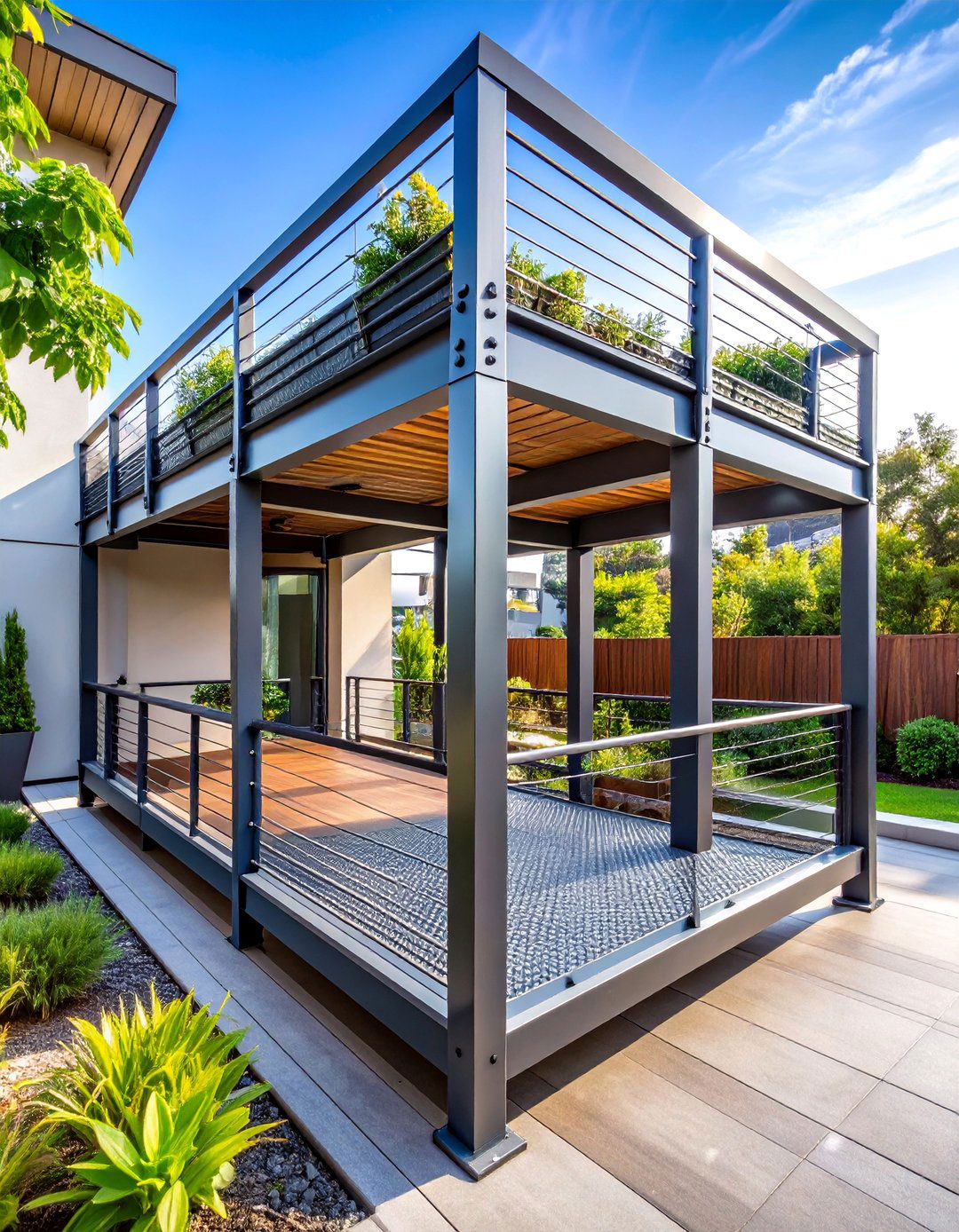
Modern steel elevated walkways bring industrial sophistication to both residential and commercial spaces through their robust construction and contemporary appeal. This design features galvanized steel grating for the walking surface, providing excellent drainage and slip resistance in all weather conditions. Heavy-duty steel posts and beams create the structural framework, while powder-coated railings ensure long-term durability and safety compliance. The open grating design allows light to filter through to plants below while maintaining structural integrity. These walkways excel in areas requiring high load capacity, minimal maintenance, and weather resistance. The industrial aesthetic pairs beautifully with modern architecture, while the functional design makes them ideal for connecting different building levels or spanning challenging terrain.
3. Glass-Enclosed Elevated Breezeway

Contemporary glass-enclosed elevated walkways create stunning architectural statements while providing year-round usability and weather protection. This design features floor-to-ceiling glass panels supported by sleek metal framing, allowing unobstructed views while connecting separate structures. The transparent walls maintain visual openness while blocking wind and precipitation. Heated flooring systems extend the walkway's functionality into colder months, creating comfortable passage regardless of weather conditions. The glass construction maximizes natural light penetration, making the space feel bright and airy. This approach works exceptionally well for connecting main buildings to guest houses, garages, or office spaces. The minimalist aesthetic complements modern architectural styles while providing practical climate-controlled passage between structures.
4. Suspended Rope Bridge with Wooden Planks
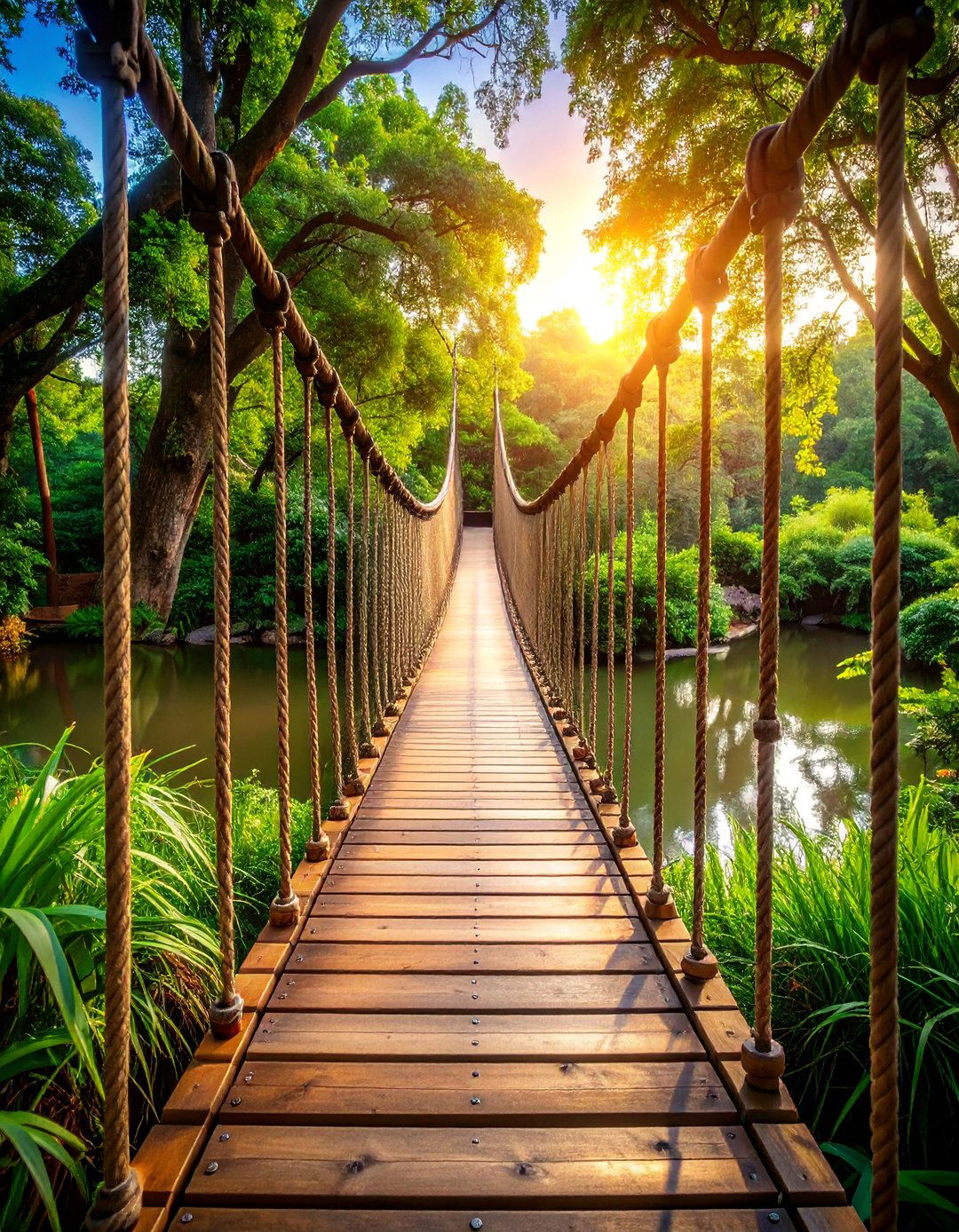
Adventure-inspired suspended rope bridges add excitement and whimsy to elevated walkway designs while maintaining functional passage capabilities. This design features wooden plank decking suspended by heavy-duty rope or cable systems anchored to sturdy posts or trees. The gentle swaying motion creates an engaging experience while crossing, making it particularly appealing for families with children. Safety netting along the sides provides additional security without compromising the adventurous feel. The natural materials blend beautifully with garden settings, while the suspension design minimizes ground impact and foundation requirements. This walkway style works exceptionally well over streams, ponds, or low-lying garden areas where traditional support structures might interfere with the landscape or water flow beneath.
5. Concrete Platform Walkway with Modern Lines
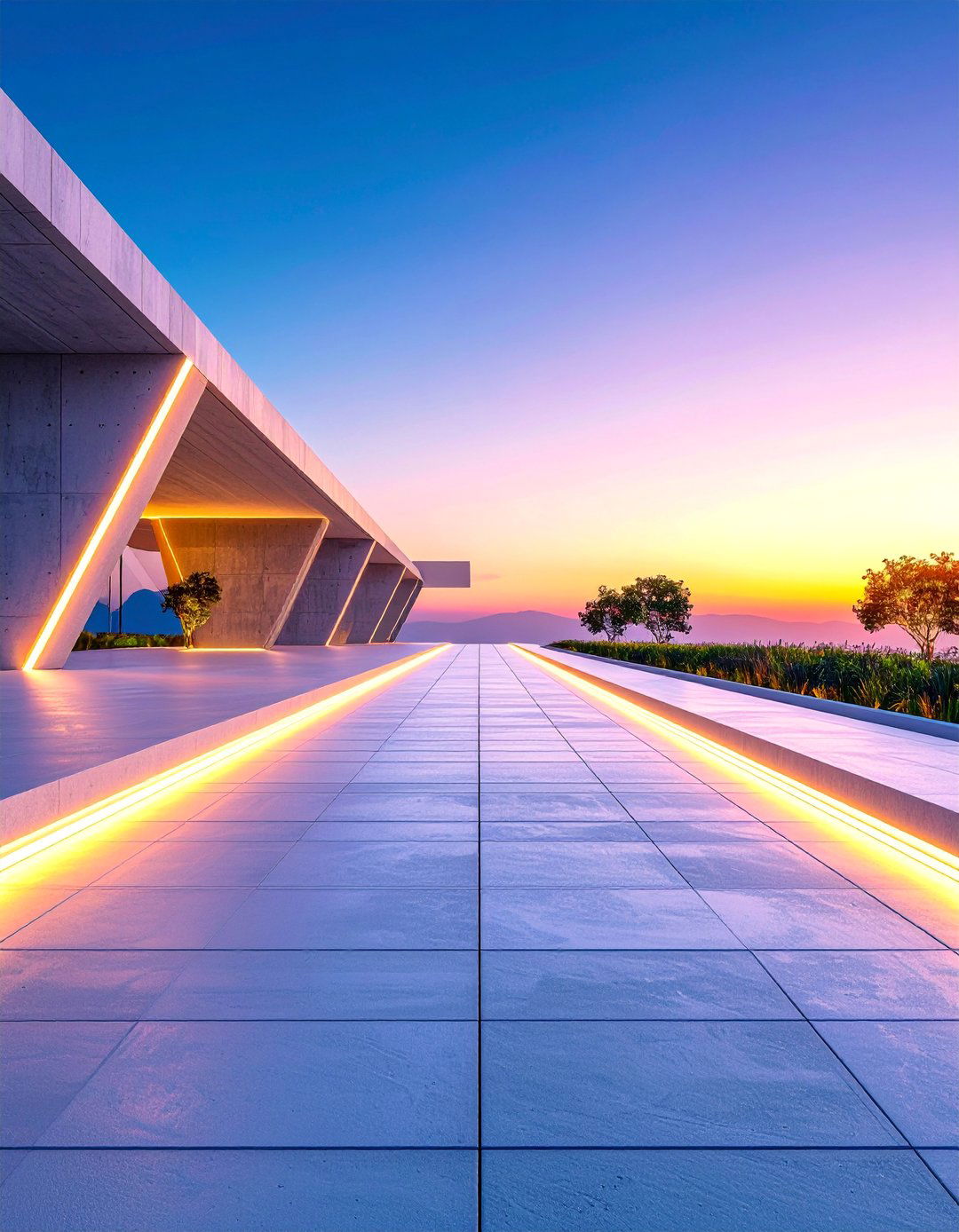
Sleek concrete elevated walkways offer contemporary sophistication through clean geometric forms and minimal maintenance requirements. This design features precast or poured concrete platforms supported by engineered foundations, creating a permanent and durable pathway solution. The smooth surfaces can be textured for slip resistance or finished with decorative aggregates for visual interest. Integrated LED lighting strips along the edges provide safety illumination while enhancing the modern aesthetic. The monolithic appearance creates strong architectural statements that complement contemporary home designs. These walkways excel in areas requiring long-term durability and minimal upkeep. The concrete construction allows for custom shapes and integration with existing hardscaping elements, making them ideal for connecting patios, decks, and building entrances.
6. Floating Deck Walkway Over Water Features
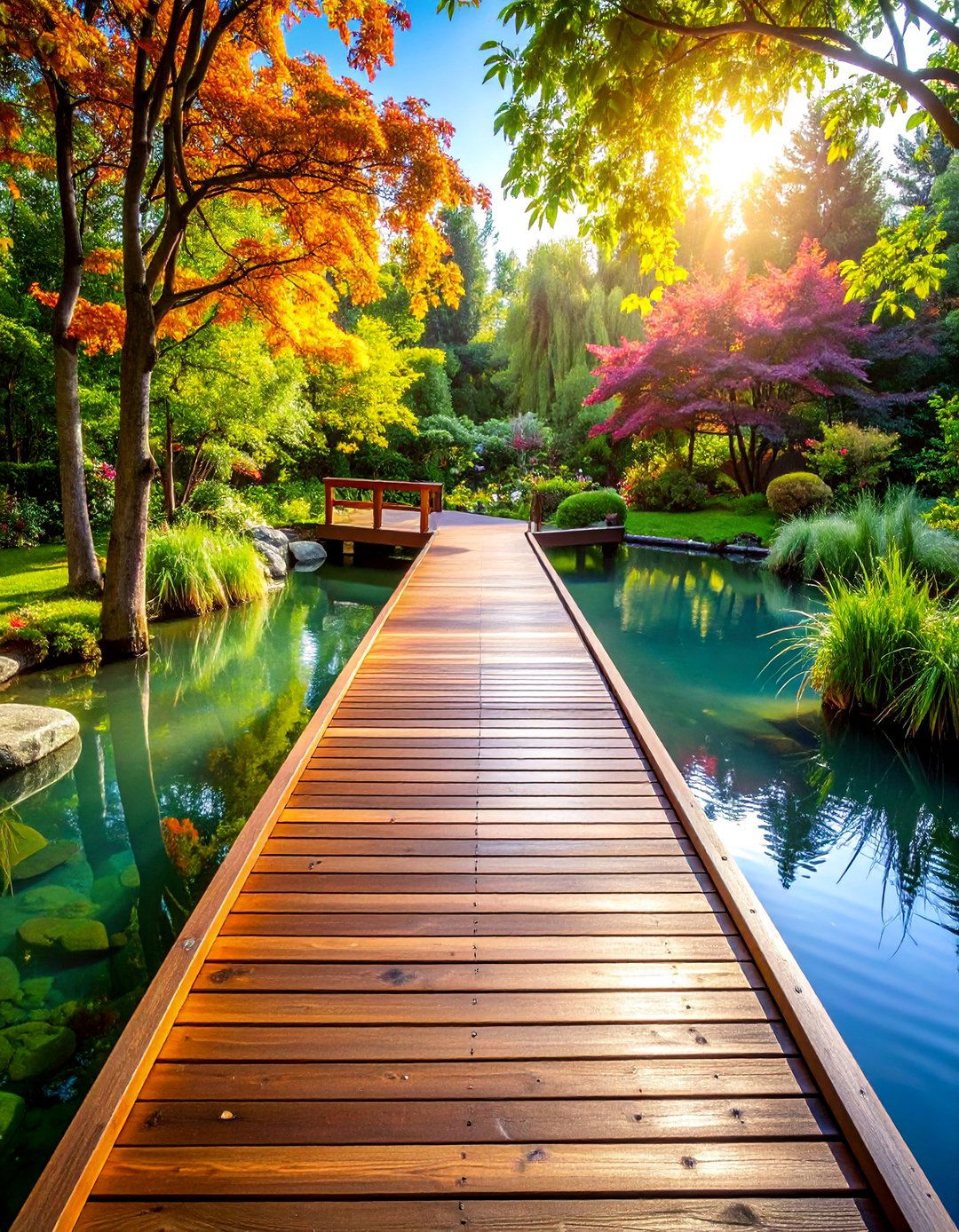
Elegant floating deck walkways create the illusion of walking on water while providing stable passage over ponds, streams, or wetland areas. This design uses hidden support structures beneath the water surface, making the decking appear to float independently. Premium materials like composite decking or tropical hardwoods resist moisture and maintain their appearance in aquatic environments. The low-profile design minimizes visual impact on water features while providing necessary access for maintenance and enjoyment. Subtle lighting integrated into the deck edges enhances evening ambiance and safety. This approach works beautifully in Japanese-inspired gardens, contemporary landscapes with water elements, or natural pond settings where preserving the aquatic ecosystem is important while maintaining functional access.
7. Bamboo Elevated Walkway with Tropical Aesthetic

Sustainable bamboo elevated walkways bring tropical sophistication and environmental consciousness to outdoor design through this rapidly renewable material. The natural bamboo construction creates warm, organic textures that complement lush plantings and water features beautifully. Carefully engineered connections ensure structural integrity while maintaining the material's natural flexibility and movement characteristics. The hollow bamboo construction provides natural insulation properties while remaining lightweight for easier installation. Protective finishes help maintain the bamboo's natural color and prevent weathering damage. This design approach works exceptionally well in tropical or subtropical climates, zen gardens, and environmentally focused landscapes. The sustainable nature of bamboo makes it an excellent choice for eco-conscious homeowners seeking elevated walkway solutions that minimize environmental impact.
8. Cantilevered Modern Walkway with Steel Framework
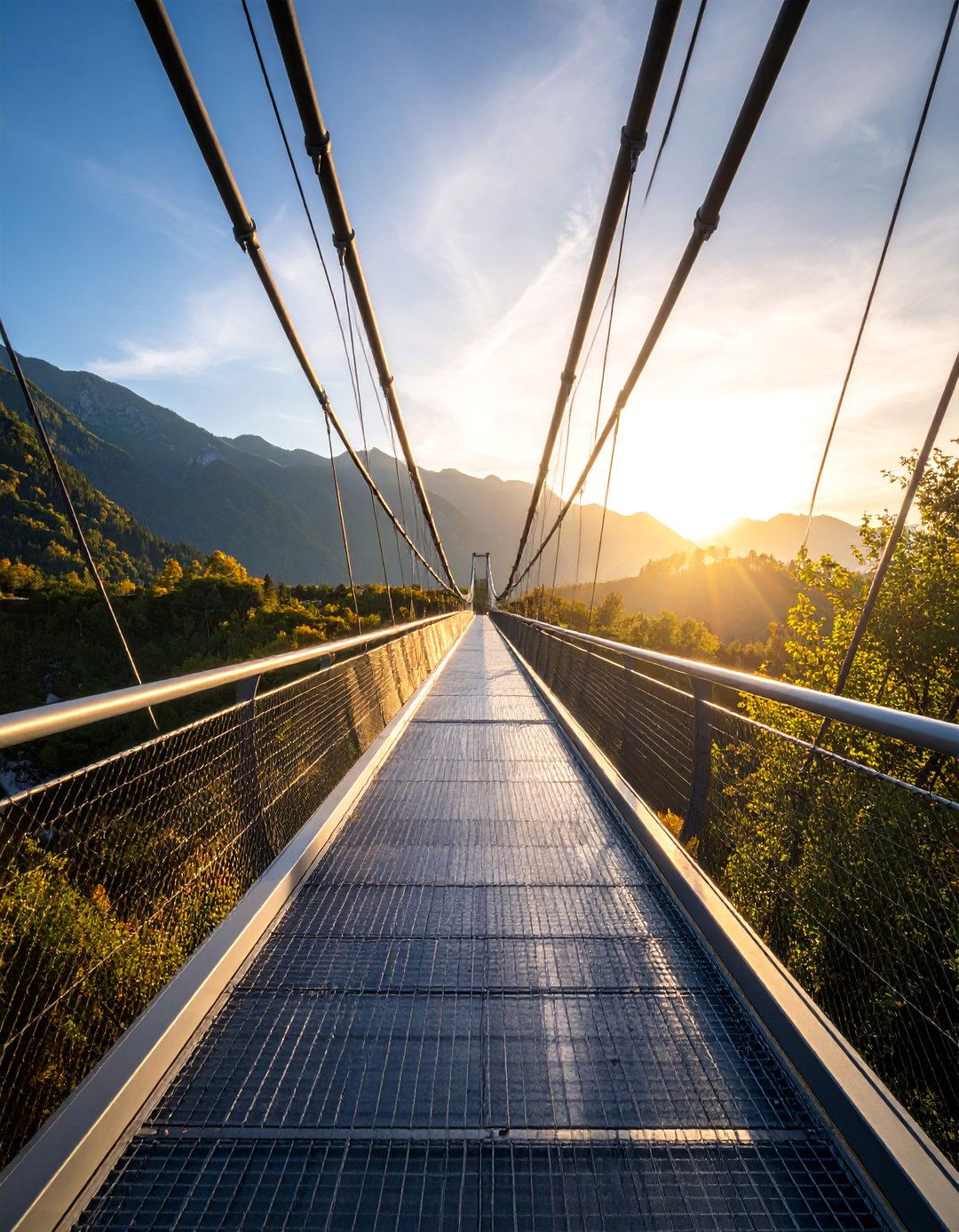
Dramatic cantilevered elevated walkways create striking architectural features through bold engineering and contemporary design principles. This approach uses steel framework to support walkway sections that extend beyond their support points, creating the appearance of floating in space. The cantilevered design allows the walkway to span obstacles without intermediate supports, preserving landscape features below. Sleek materials like steel mesh decking or composite planking maintain the modern aesthetic while providing functional walking surfaces. Integrated railings become part of the overall sculptural design rather than mere safety additions. This walkway style works particularly well in contemporary landscapes with challenging topography, where dramatic architectural statements enhance the overall property design and provide unique vantage points for viewing the surroundings.
9. Arched Garden Bridge with Decorative Elements

Classic arched elevated walkways combine timeless elegance with functional design through graceful curved construction and decorative detailing. The arched form distributes weight efficiently while creating beautiful sight lines from multiple viewing angles. Traditional materials like painted wood or wrought iron enhance the romantic garden aesthetic, while decorative balusters and ornamental elements add visual interest. The elevated design provides excellent views over garden beds, water features, or lower landscape areas. Climbing plants can be trained along the structure to create living architectural elements that change with the seasons. This approach works beautifully in formal gardens, cottage-style landscapes, and traditional architectural settings where classical design elements enhance the overall aesthetic while providing practical elevated passage through the garden space.
10. Multi-Level Terraced Walkway System

Complex multi-level terraced walkways create dynamic landscape solutions for sloped properties through interconnected elevated platforms at varying heights. This design approach uses a series of connected walkways, stairs, and landings to navigate challenging topography while creating multiple outdoor living spaces. Each level can serve different functions, from viewing platforms to seating areas to garden access points. Materials can be coordinated throughout or varied to create visual interest and define different zones. Integrated planters and landscape features help tie the structures into the surrounding environment. This approach works exceptionally well on hillside properties, where maximizing usable outdoor space and creating comfortable circulation routes requires creative elevation changes and multiple access points throughout the landscape.
11. Illuminated LED Strip Walkway Design
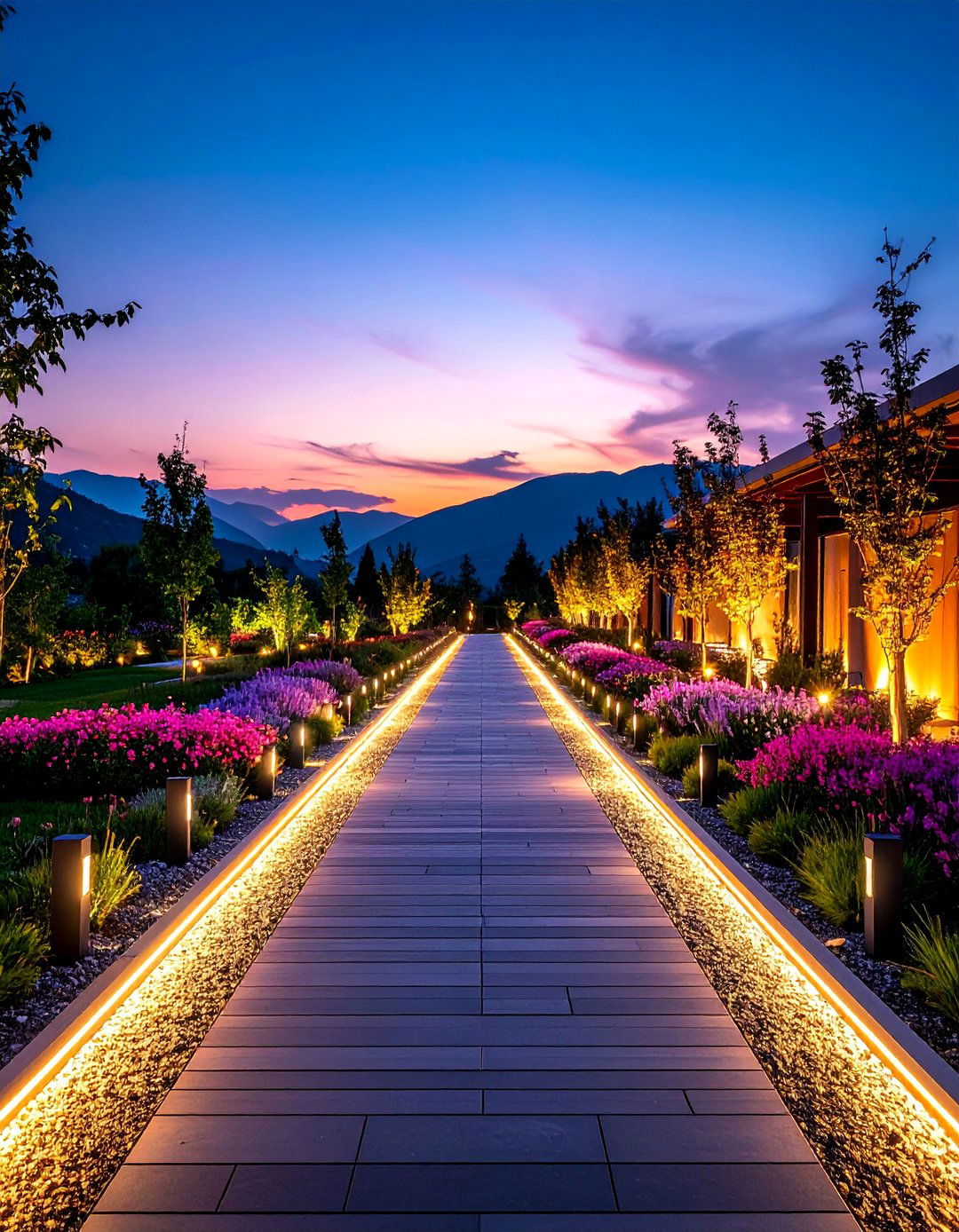
Contemporary LED-illuminated elevated walkways combine safety functionality with dramatic nighttime ambiance through integrated lighting systems. This design incorporates LED strip lighting along walkway edges, railings, or beneath decking surfaces to create soft, even illumination. The low-voltage LED systems provide energy-efficient operation while offering color-changing capabilities for special occasions or seasonal themes. The lighting can be programmed for automatic operation or controlled via smart home systems for convenience. Weatherproof fixtures ensure reliable operation in all conditions, while the low heat output makes them safe for close contact. This approach works particularly well in contemporary landscapes where evening entertainment is important, providing both practical navigation lighting and stunning visual effects that transform the walkway into a nighttime focal point.
12. Reclaimed Wood Platform with Eco-Friendly Design

Environmentally conscious reclaimed wood elevated walkways combine sustainability with rustic charm through the use of salvaged lumber and eco-friendly construction methods. This design approach gives new life to old barn wood, dock planking, or industrial timber, creating unique character and texture in each installation. The weathered patina and natural aging of reclaimed materials provide instant character that new lumber cannot replicate. Environmentally friendly finishes and fasteners complete the sustainable approach while ensuring structural integrity and weather resistance. The varied grain patterns and coloration of reclaimed wood create visually interesting walkway surfaces that tell stories of their previous uses. This approach appeals to environmentally conscious homeowners seeking unique aesthetic character while reducing environmental impact through material reuse.
13. Zen Garden Stepping Stone Walkway
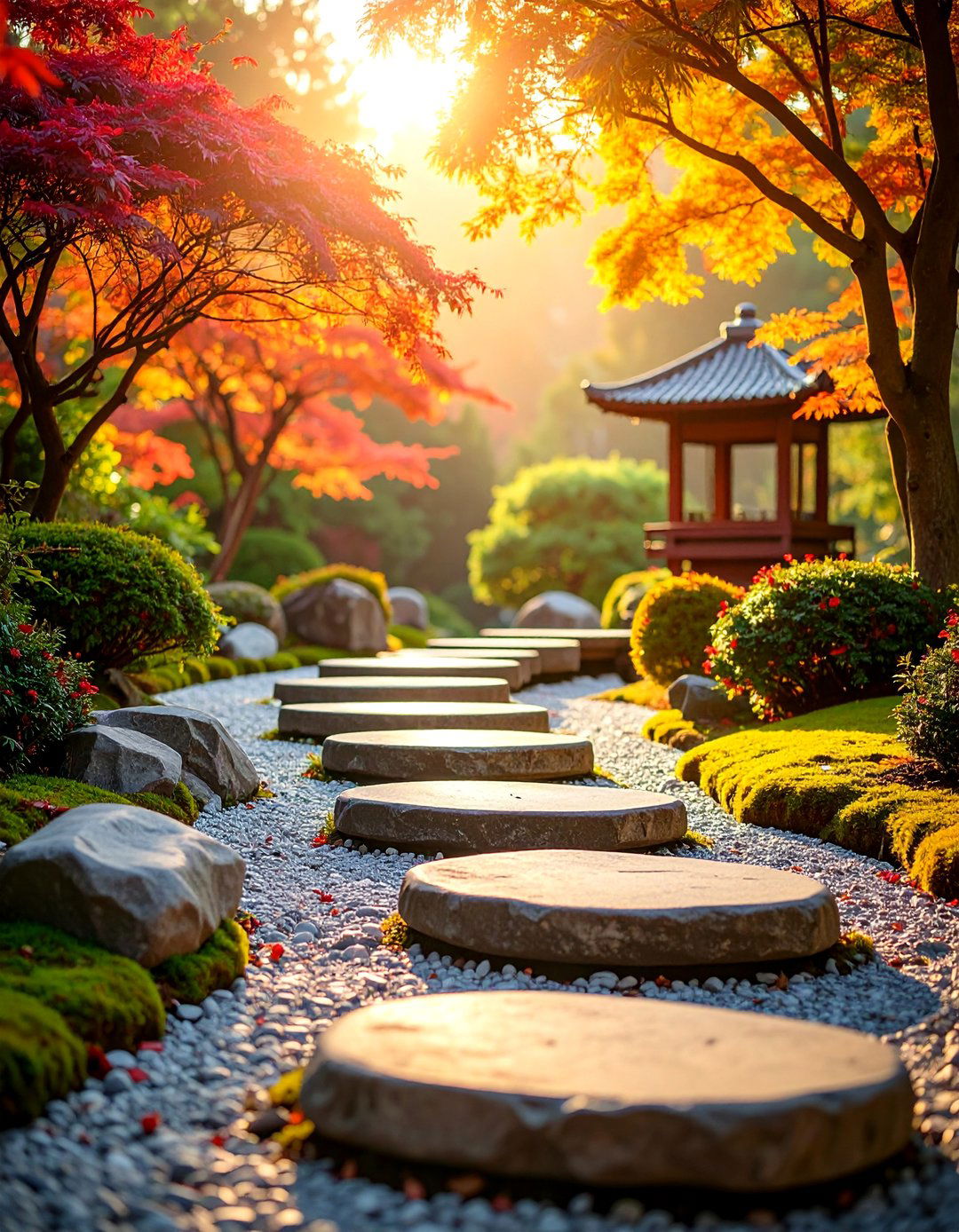
Minimalist elevated stepping stone walkways create serene passage through landscape areas while maintaining the contemplative qualities of zen garden design. This approach uses individual elevated platforms or stones spaced at comfortable walking intervals, allowing vegetation to flow between elements. The spacing encourages slower, more mindful movement through the garden space, enhancing the meditative qualities of the landscape. Natural materials like local stone or weathered wood complement the zen aesthetic while providing stable footing. The minimal intervention approach preserves existing landscape character while adding functional passage. This design works exceptionally well in meditation gardens, Japanese-inspired landscapes, and areas where maintaining natural ground cover and drainage patterns is important while providing elevated access through wet or delicate areas.
14. Victorian-Style Ornate Bridge Walkway
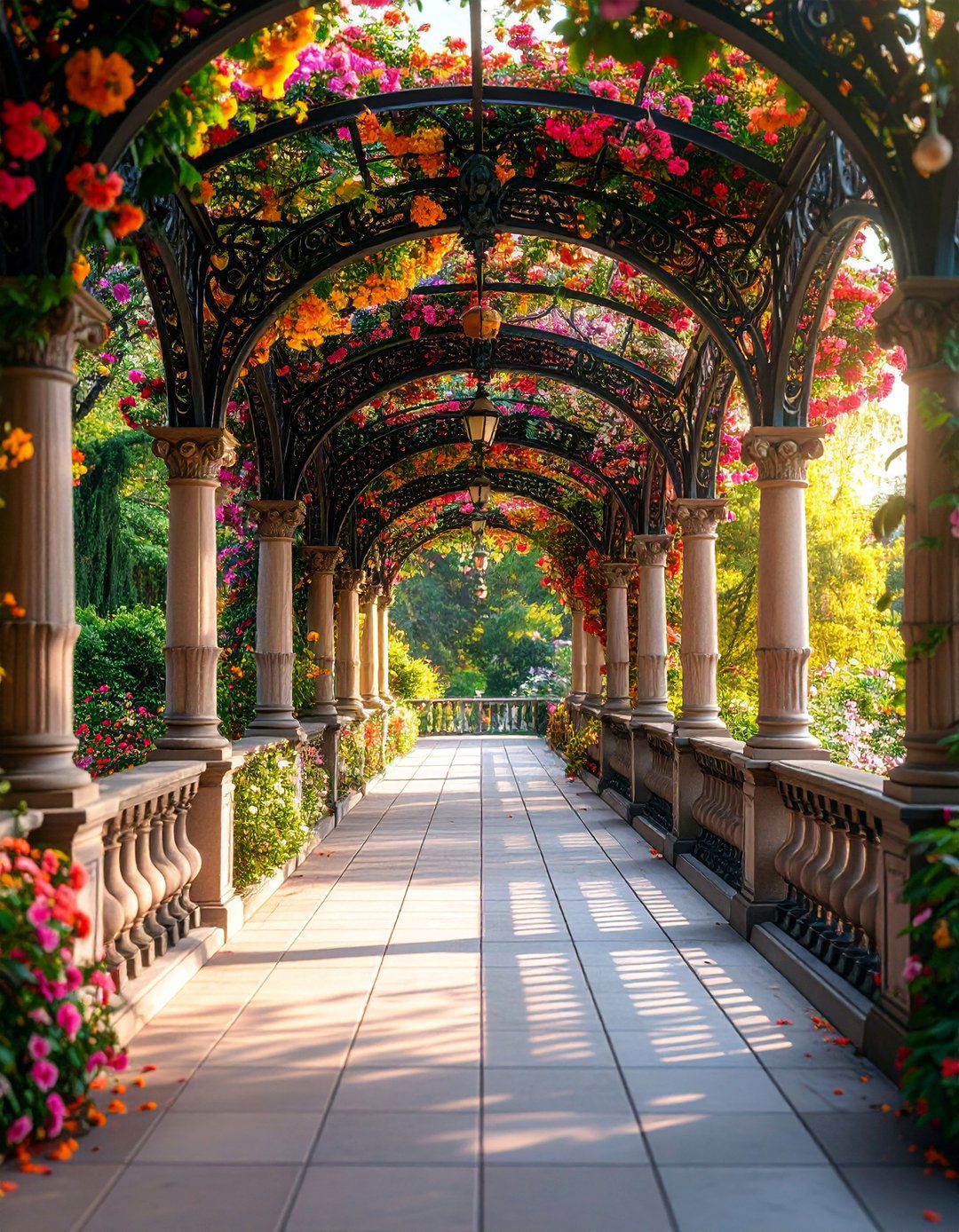
Elaborate Victorian-style elevated walkways bring historical elegance and ornate detailing to traditional landscape designs through decorative ironwork and classical proportions. This approach features intricate balusters, ornamental posts, and decorative brackets that create stunning architectural focal points. The detailed craftsmanship includes scrollwork, floral motifs, and geometric patterns that reflect the ornate aesthetic of the Victorian era. Quality materials like cast iron or detailed woodwork ensure authenticity and longevity. The elevated design provides excellent views while creating dramatic sight lines through the landscape. This walkway style works beautifully in formal gardens, historic properties, and traditional architectural settings where period-appropriate design elements enhance the overall aesthetic while providing elegant elevated passage through the garden space.
15. Modular Prefabricated Walkway System
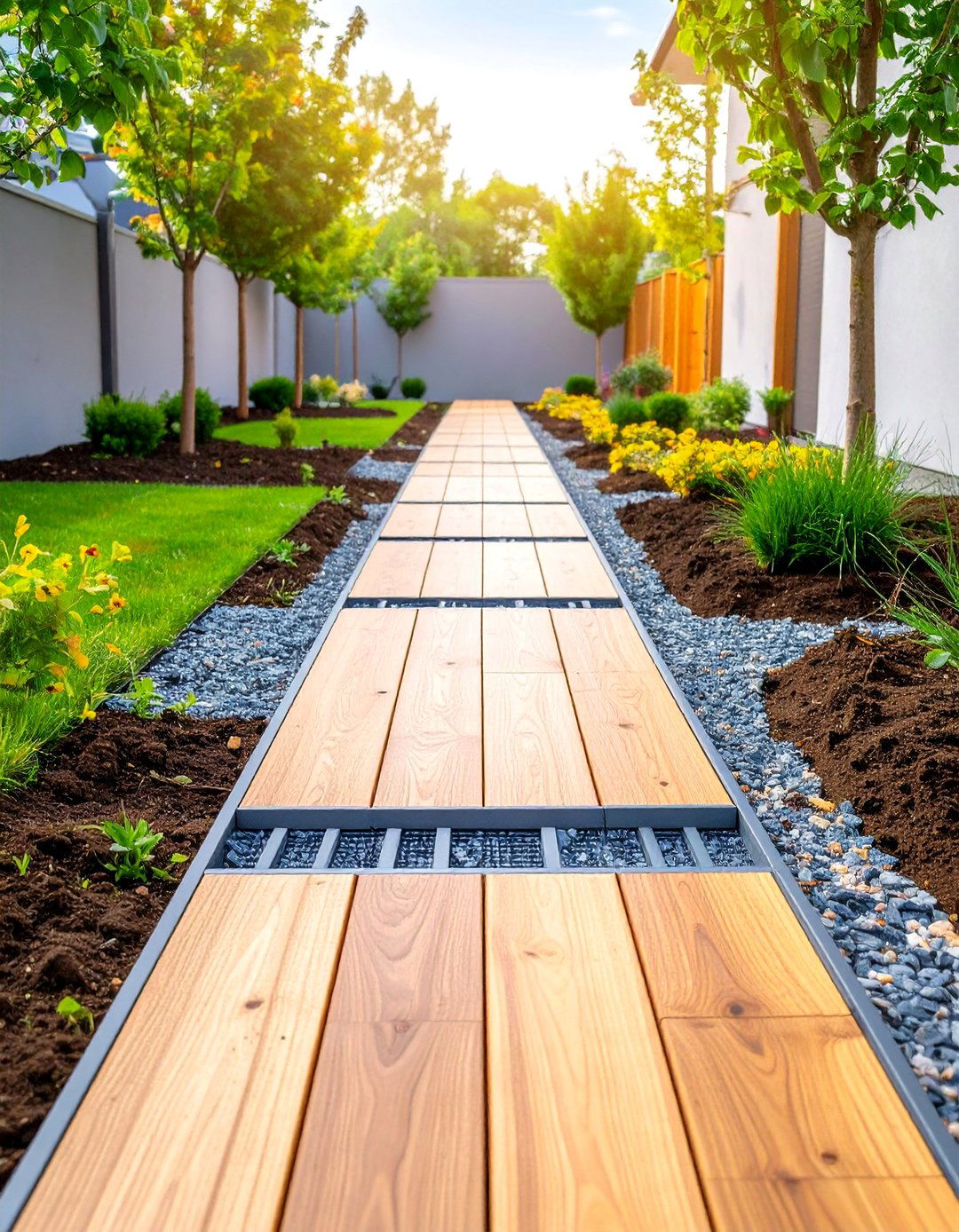
Practical modular elevated walkways offer flexible installation and customization options through prefabricated components that can be arranged to meet specific site requirements. This system approach uses standardized sections, connectors, and railings that can be combined in various configurations. The modular design allows for easy expansion, reconfiguration, or relocation as landscape needs change over time. Quick installation reduces construction time and site disruption while maintaining professional results. Standardized components ensure consistent quality and finish throughout the installation. Multiple material options allow customization to match existing landscape elements. This approach works particularly well for temporary installations, rental properties, or situations where flexibility and ease of installation are priorities while maintaining professional appearance and safety standards.
16. Spiral Elevated Observation Deck
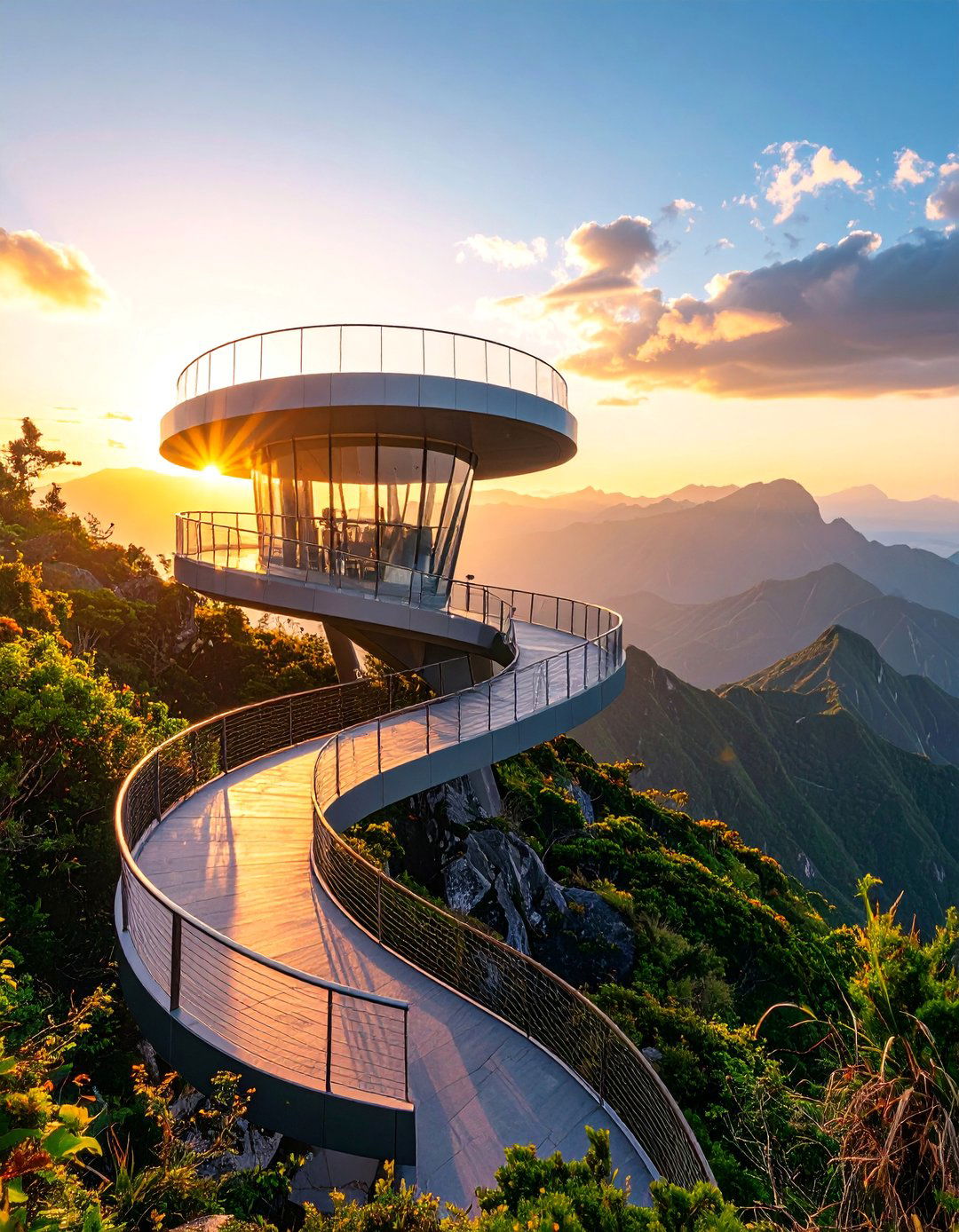
Dynamic spiral elevated walkways create unique three-dimensional experiences while providing elevated viewing opportunities through their curved, ascending design. The spiral configuration maximizes vertical elevation within a compact footprint, making it ideal for smaller properties or specific viewing requirements. The gradual ascent creates comfortable accessibility while building anticipation for the elevated destination. Multiple viewing angles and perspectives emerge as users move through the spiral path, creating ever-changing landscape vistas. Quality railings and safety features ensure security throughout the curved pathway. This approach works exceptionally well in properties with significant views, whether natural vistas, water features, or architectural elements that benefit from elevated observation points. The sculptural quality of spiral walkways makes them striking landscape focal points even when not in use.
17. Greenhouse Connector Walkway Design

Specialized greenhouse connector walkways provide climate-controlled passage between growing structures while maintaining optimal growing conditions. This design features enclosed walkways with glazed walls and roofs that protect plants and people during transport between greenhouse sections. Environmental controls can extend into the walkway space, maintaining consistent temperature and humidity levels. The glazed construction maximizes light transmission while providing weather protection. Ventilation systems ensure proper air circulation while preventing heat buildup. This approach works particularly well for serious gardeners, commercial growing operations, or properties with multiple greenhouse structures that need convenient interconnection. The protected environment allows year-round use regardless of weather conditions while maintaining the aesthetic qualities of traditional greenhouse architecture.
18. Boardwalk Pier Extending Over Landscape
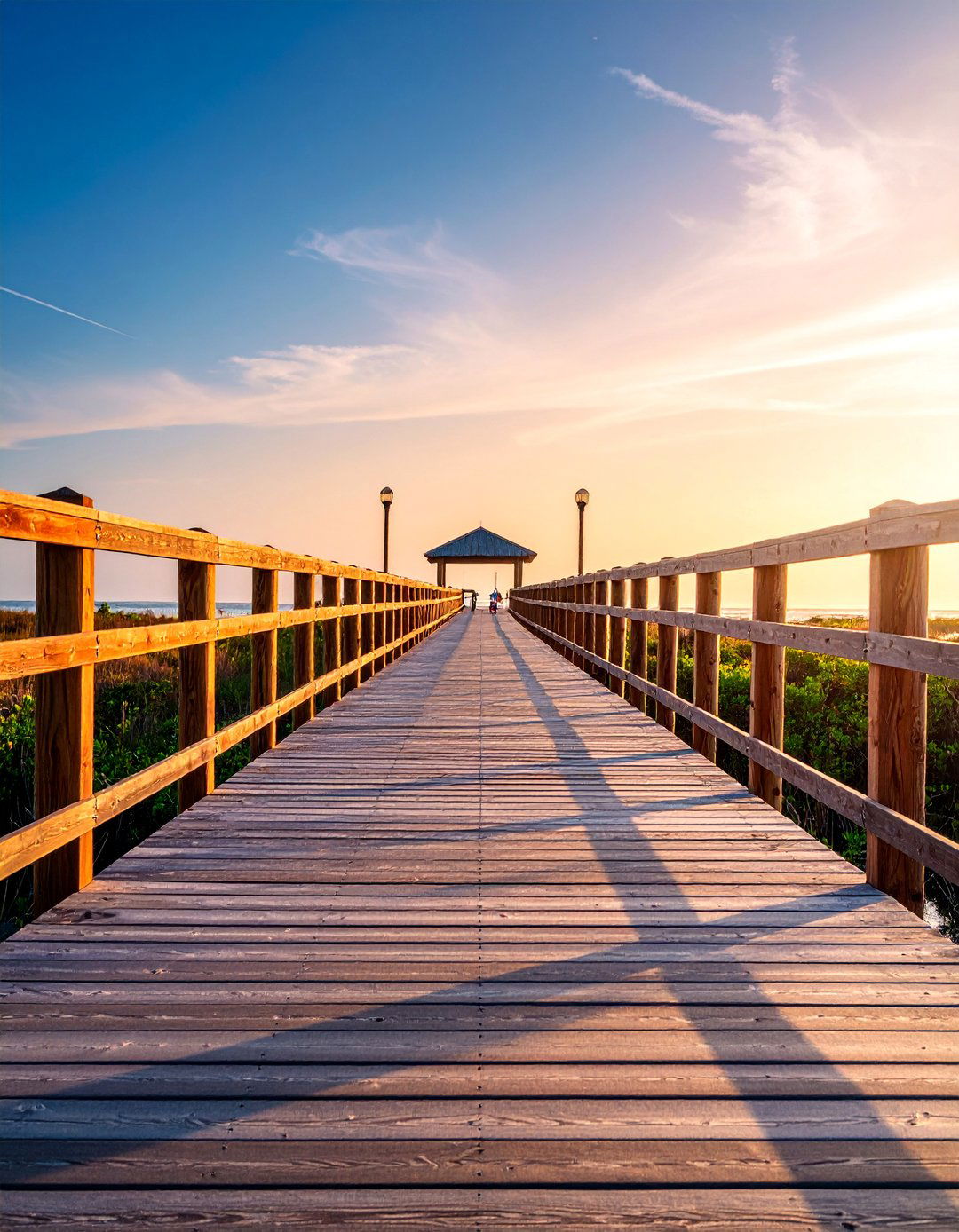
Waterfront-inspired boardwalk piers create dramatic elevated walkways that extend over landscape features while evoking coastal architecture and marine environments. This design uses traditional pier construction techniques with heavy timber posts and planked decking surfaces. The elevated structure can span water features, wetlands, or simply extend into garden areas for unique viewing perspectives. Marine-grade hardware and weather-resistant finishes ensure longevity in outdoor environments. The pier design allows for benches, viewing platforms, or fishing access at the terminus. This approach works beautifully near water features, in coastal properties, or anywhere the maritime aesthetic enhances the overall landscape design. The linear extension creates strong sight lines while providing elevated access to areas that might otherwise be difficult to reach.
19. Living Roof Walkway with Green Technology

Innovative living roof walkways combine elevated passage with green technology through planted roof systems that provide environmental benefits. This design incorporates drought-tolerant vegetation, drainage systems, and growing media on top of weatherproof walkway structures. The living roof provides insulation, stormwater management, and habitat while creating beautiful seasonal displays. Native plant selections ensure low maintenance requirements while supporting local ecosystems. The green technology reduces heat island effects while providing natural cooling and air purification. This approach appeals to environmentally conscious homeowners seeking elevated walkways that contribute positively to the landscape ecosystem. The changing seasonal displays create year-round visual interest while providing practical elevated passage and environmental benefits that continue working even when the walkway is not in use.
20. Tree-to-Tree Canopy Walkway
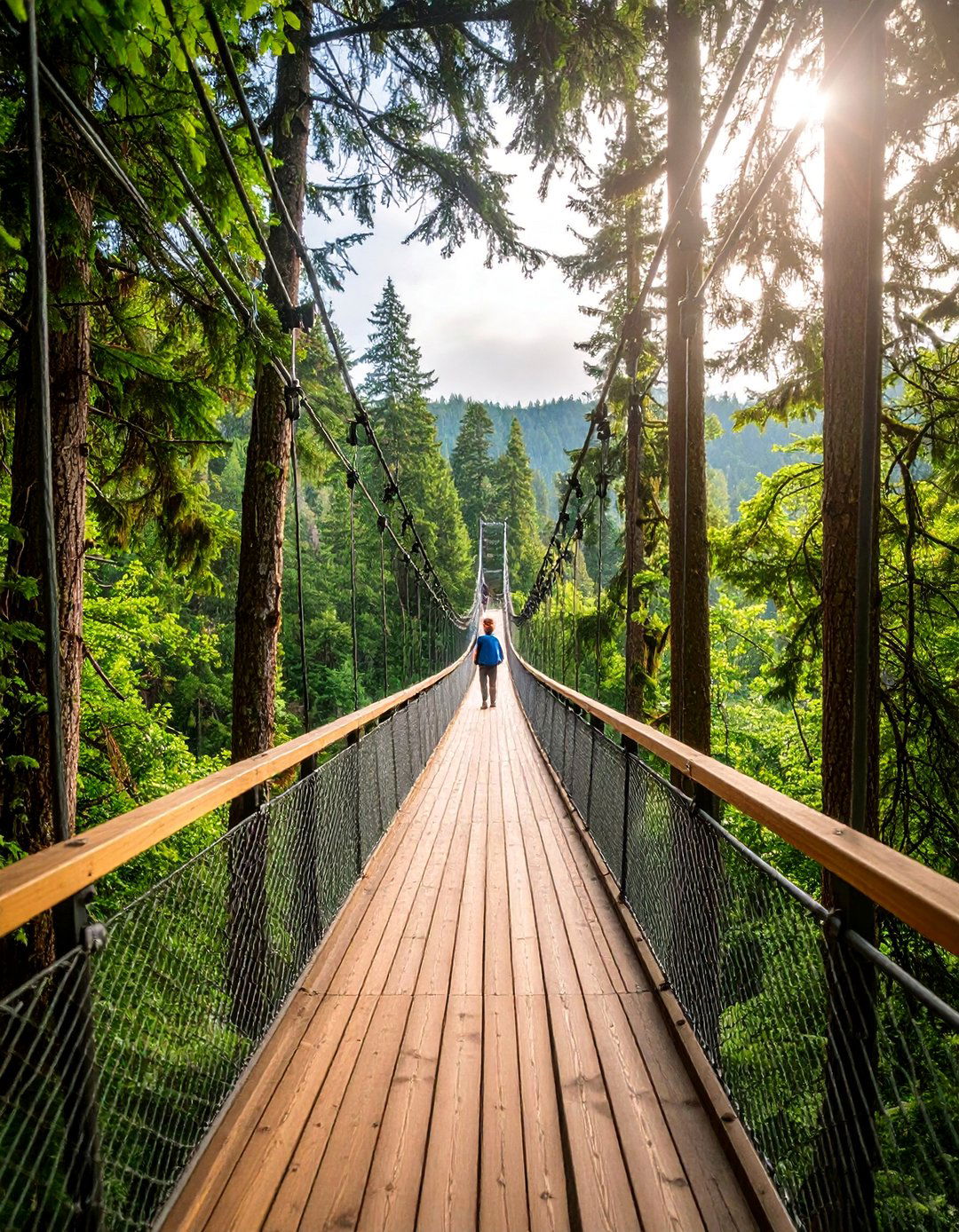
Adventure-inspired tree-to-tree canopy walkways create elevated passage through existing mature trees while minimizing impact on root systems and trunk stability. This design uses specialized tree attachment systems that accommodate natural tree movement and growth while providing stable walkway connections. The elevated position provides unique canopy-level perspectives and wildlife viewing opportunities. Flexible connections allow for natural tree sway while maintaining walkway integrity. Professional arborist consultation ensures tree health and safety throughout the installation process. This approach works exceptionally well in properties with mature tree stands, providing elevated access through wooded areas while preserving existing forest character. The canopy-level experience creates unique outdoor adventure opportunities while maintaining environmental sensitivity and tree preservation priorities.
21. Steel Grating Industrial Crossover Platform
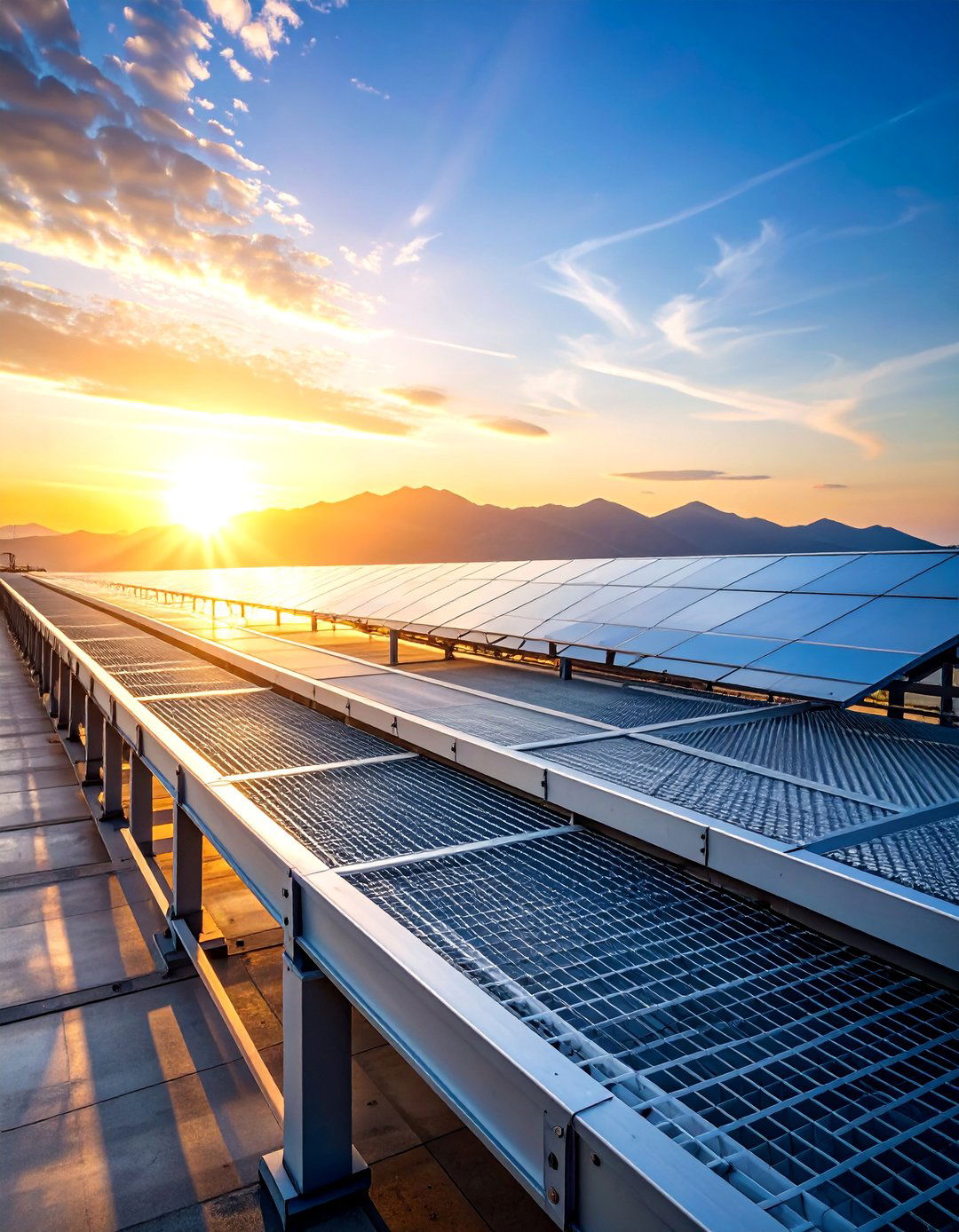
Heavy-duty steel grating crossover platforms provide robust elevated walkways designed for high-traffic areas and demanding environmental conditions. This industrial-strength design features galvanized steel grating that provides excellent drainage, slip resistance, and structural integrity. The open grating design allows snow, rain, and debris to pass through while maintaining safe walking surfaces. Heavy-duty steel framework ensures long-term durability and high load capacity. Safety features include compliant railings and slip-resistant surfaces that meet commercial standards. This approach works particularly well in areas requiring high durability, minimal maintenance, and weather resistance. The industrial aesthetic complements contemporary architecture while providing practical elevated passage that can withstand heavy use and challenging environmental conditions over many years of service.
22. Composite Decking Low-Maintenance Walkway
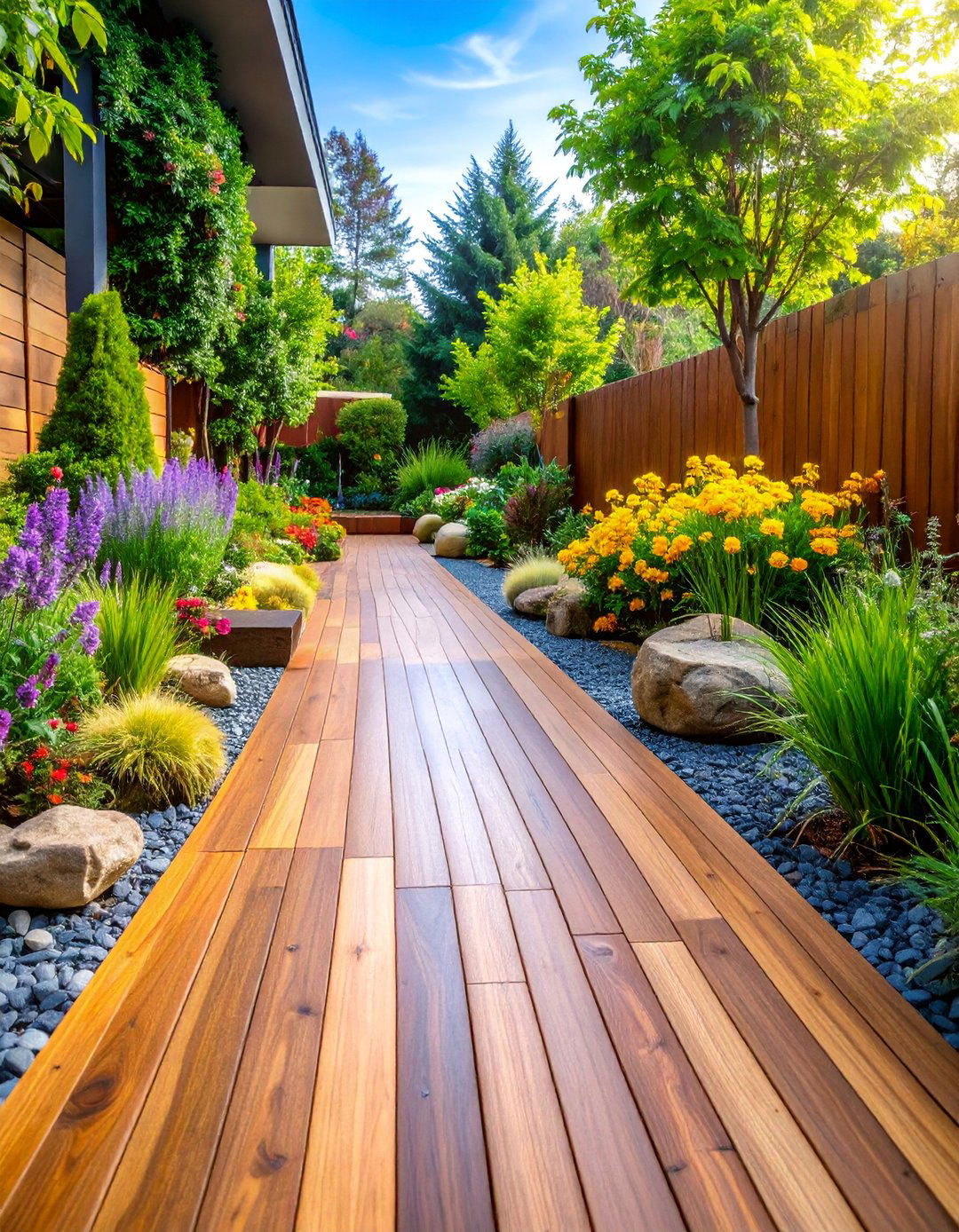
Modern composite decking elevated walkways offer superior durability and minimal maintenance requirements through advanced material technology and engineered performance characteristics. This design combines recycled wood fibers with polymer resins to create walkway surfaces that resist fading, staining, and weather damage. The composite materials eliminate the need for regular staining or sealing while maintaining natural wood appearance. Hidden fastener systems create smooth, splinter-free surfaces that are comfortable for bare feet. Color options allow coordination with existing outdoor living spaces. This approach appeals to homeowners seeking the natural appearance of wood without ongoing maintenance requirements. The engineered materials provide consistent performance and appearance over many years while resisting common problems like rot, insect damage, and weathering that affect traditional wood walkways.
23. Curved Sweeping Walkway with Dramatic Lines

Elegant curved elevated walkways create graceful landscape transitions through sweeping lines that follow natural topography and enhance overall design flow. This approach uses gentle curves and flowing forms that complement organic landscape shapes while providing practical elevated passage. The curved design creates multiple viewing angles and perspectives as users move through the landscape. Careful grading and elevation changes enhance the sense of movement and discovery. Quality materials and construction details ensure the curved forms maintain their intended shape over time. This design works particularly well in large landscapes where dramatic sight lines and elegant transitions enhance the overall aesthetic. The flowing curves create natural gathering spots and resting points while maintaining the overall design continuity throughout the elevated walkway system.
24. Retractable Bridge Walkway System

Innovative retractable elevated walkways provide flexible access solutions through mechanical systems that can open for boat passage or close for pedestrian use. This specialized design incorporates heavy-duty mechanical components, electric operators, and safety systems for reliable operation. The retractable mechanism allows normal water traffic while providing convenient pedestrian access when needed. Professional engineering ensures proper load distribution and operational safety throughout the mechanical systems. Remote controls or automated systems provide convenient operation from multiple locations. This approach works particularly well over navigable waterways where both pedestrian access and boat passage are important. The mechanical sophistication creates impressive engineering displays while solving practical access challenges that would be difficult to address with traditional fixed walkway designs.
25. Solar-Powered Walkway with Sustainable Features

Environmentally advanced solar-powered elevated walkways combine renewable energy systems with elevated passage to create completely self-sufficient outdoor infrastructure. This design incorporates photovoltaic panels, LED lighting systems, and battery storage for off-grid operation. The solar collection systems power integrated lighting, security features, and smart controls without external electrical connections. Weather monitoring and automated systems adjust lighting levels based on conditions and usage patterns. The sustainable design eliminates ongoing electrical costs while providing reliable operation. This approach appeals to environmentally conscious homeowners seeking elevated walkways that generate their own power while reducing environmental impact. The renewable energy systems create educational opportunities while demonstrating practical applications of green technology in landscape design.
Conclusion:
Elevated walkways offer transformative solutions for challenging landscapes while creating stunning architectural features that enhance any property. From rustic wooden boardwalks to high-tech solar-powered systems, these designs prove that functional infrastructure can also serve as beautiful focal points. The variety of materials, styles, and technologies available ensures perfect matches for every aesthetic preference and practical requirement. Whether solving drainage issues, connecting different property levels, or simply adding dramatic height variation, elevated walkways provide lasting value through their combination of practicality and visual appeal that continues improving outdoor spaces for years to come.


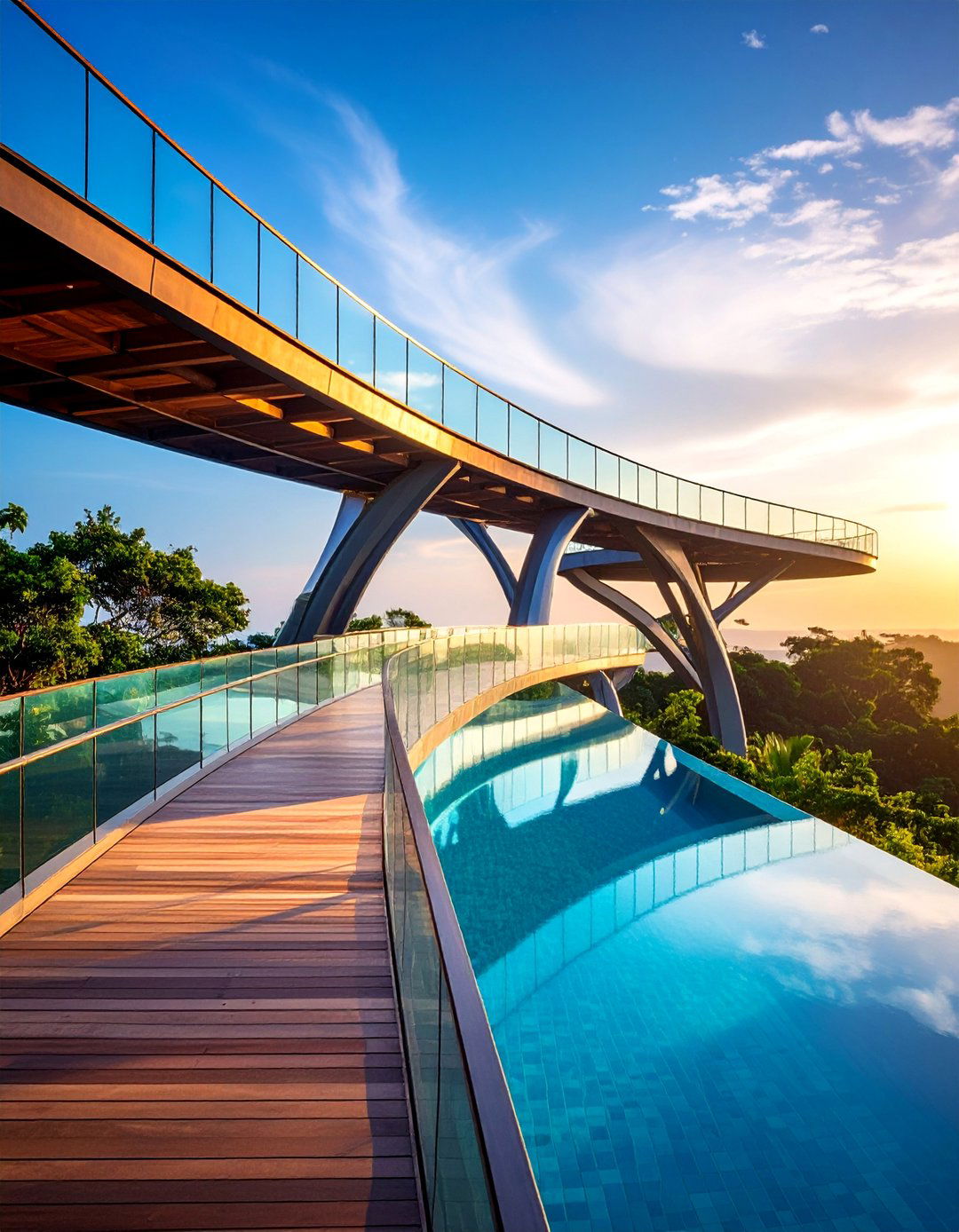
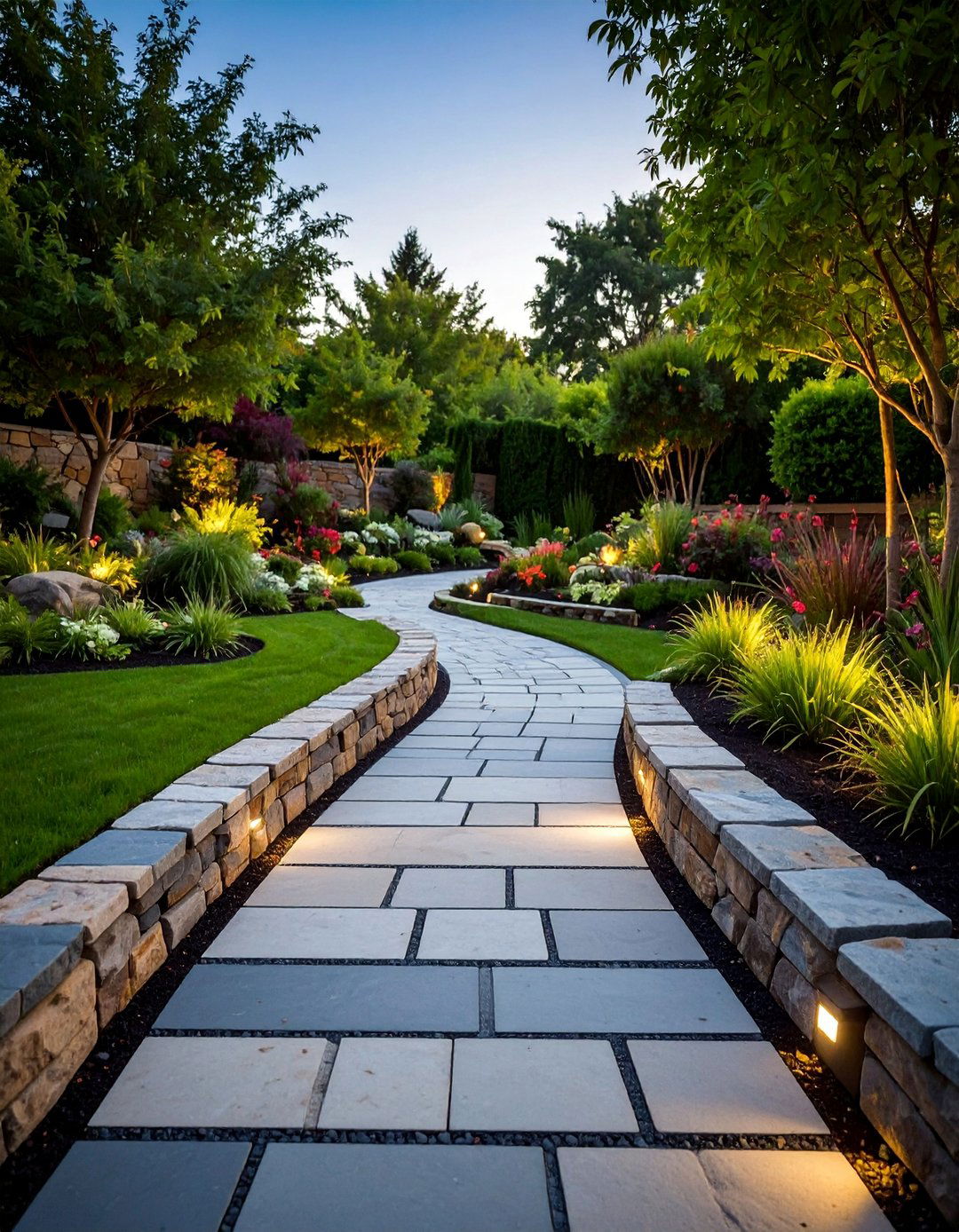
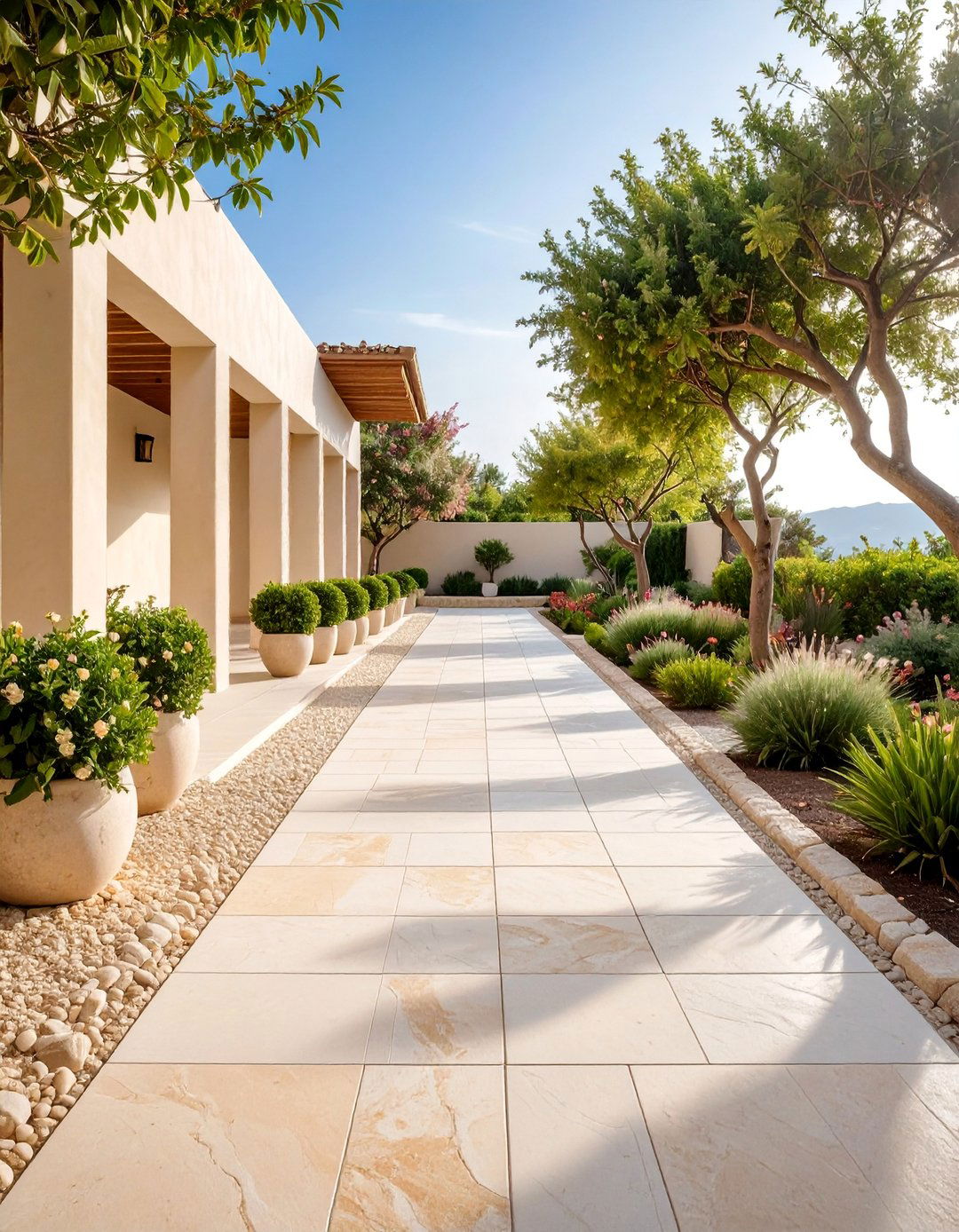
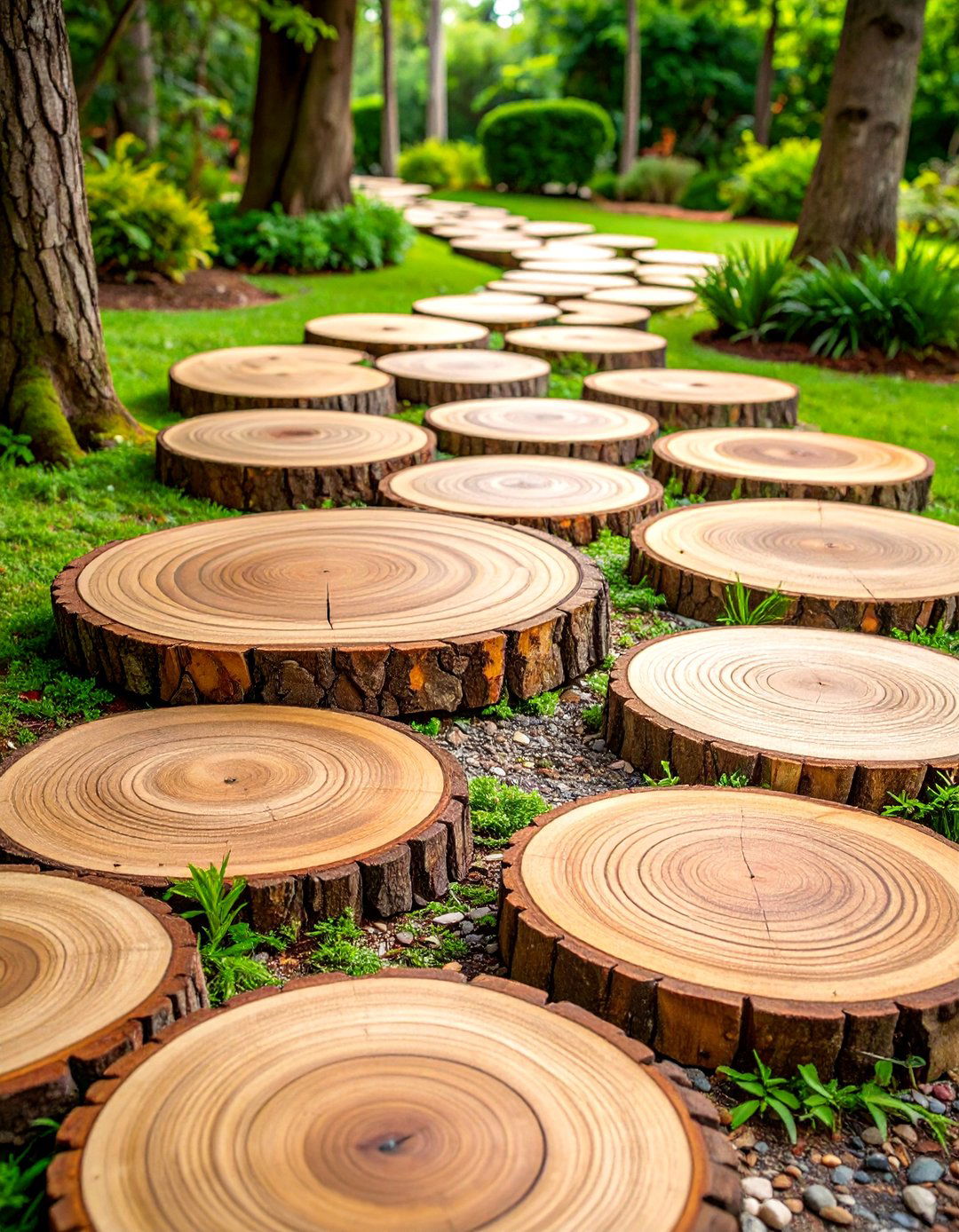

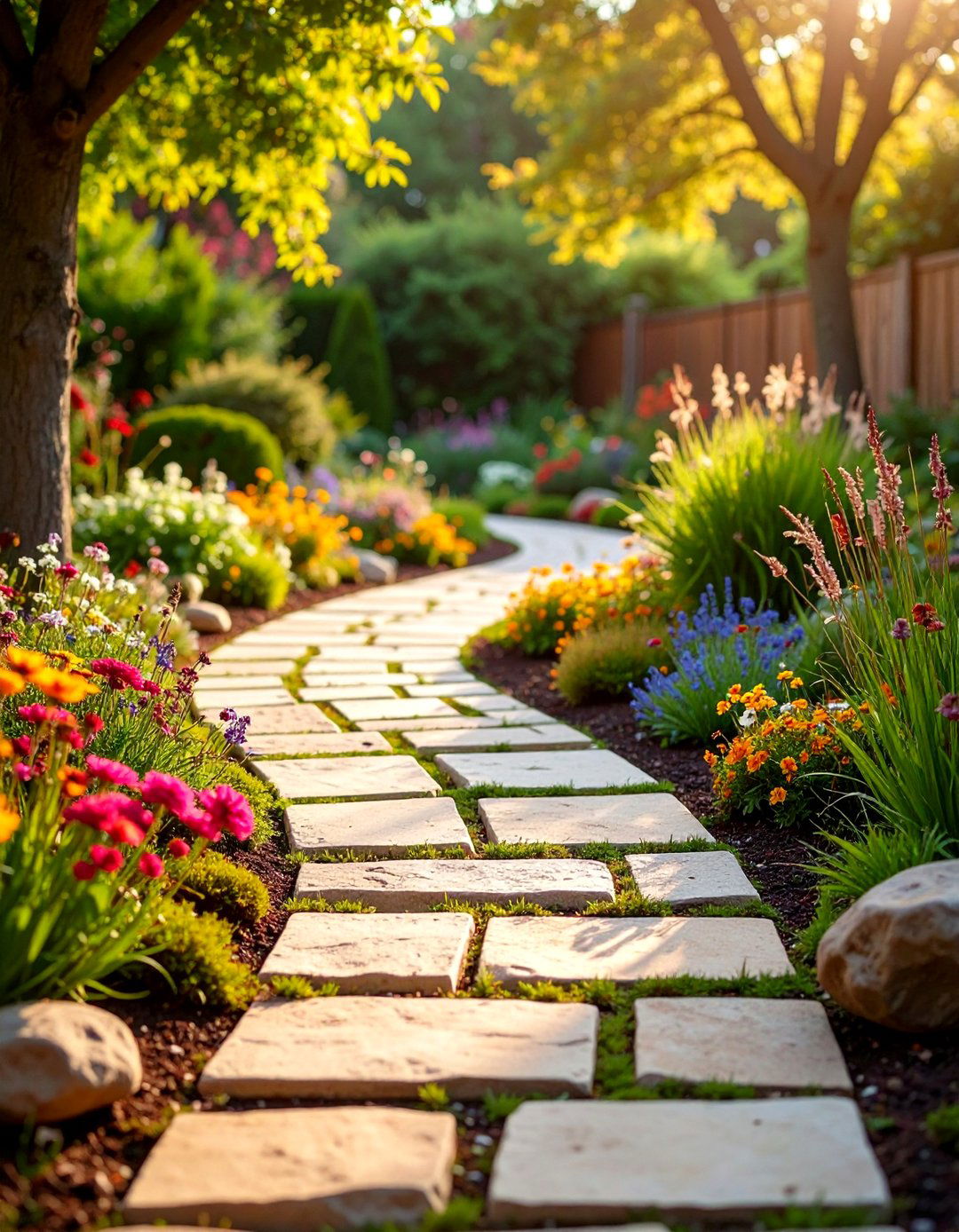

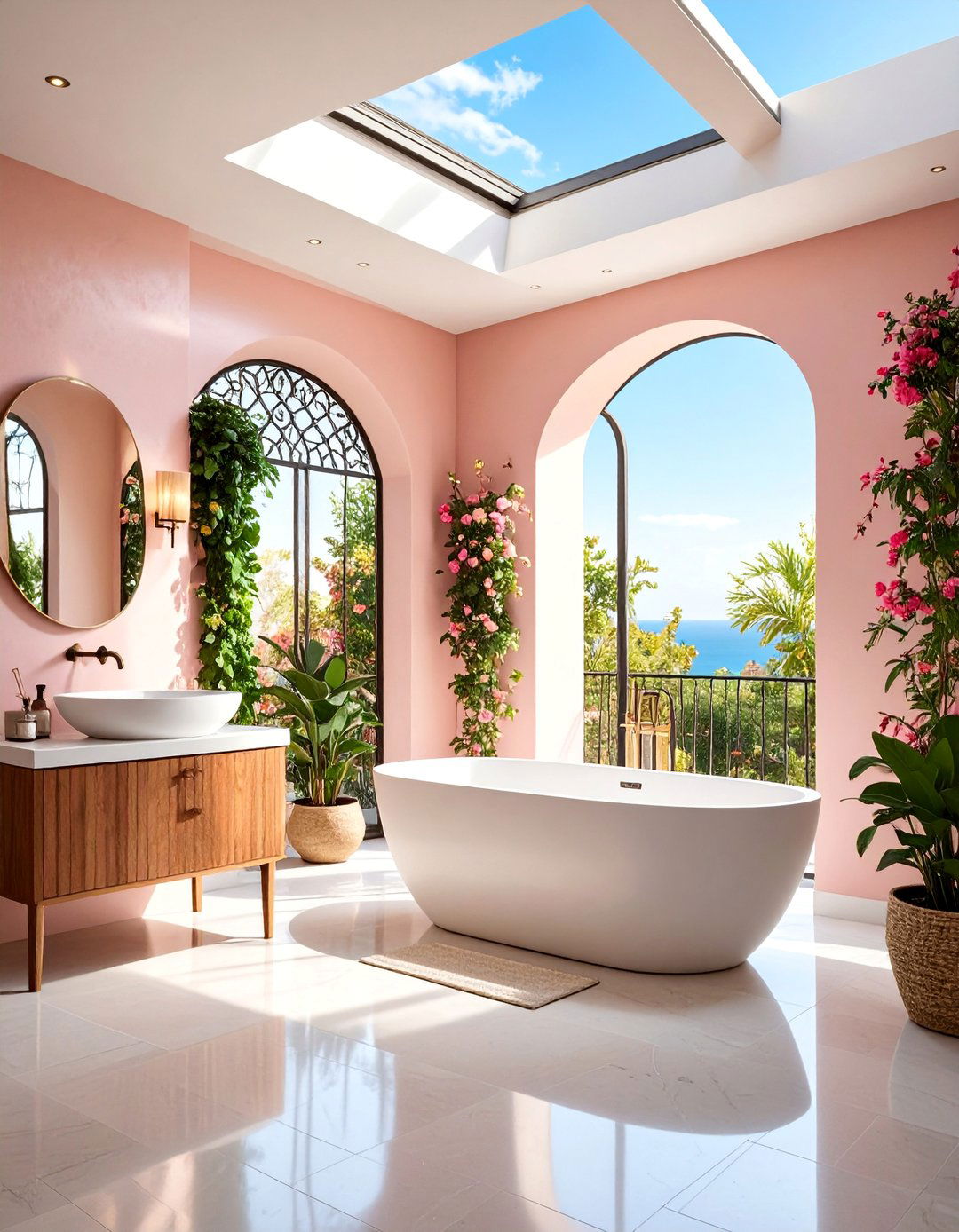

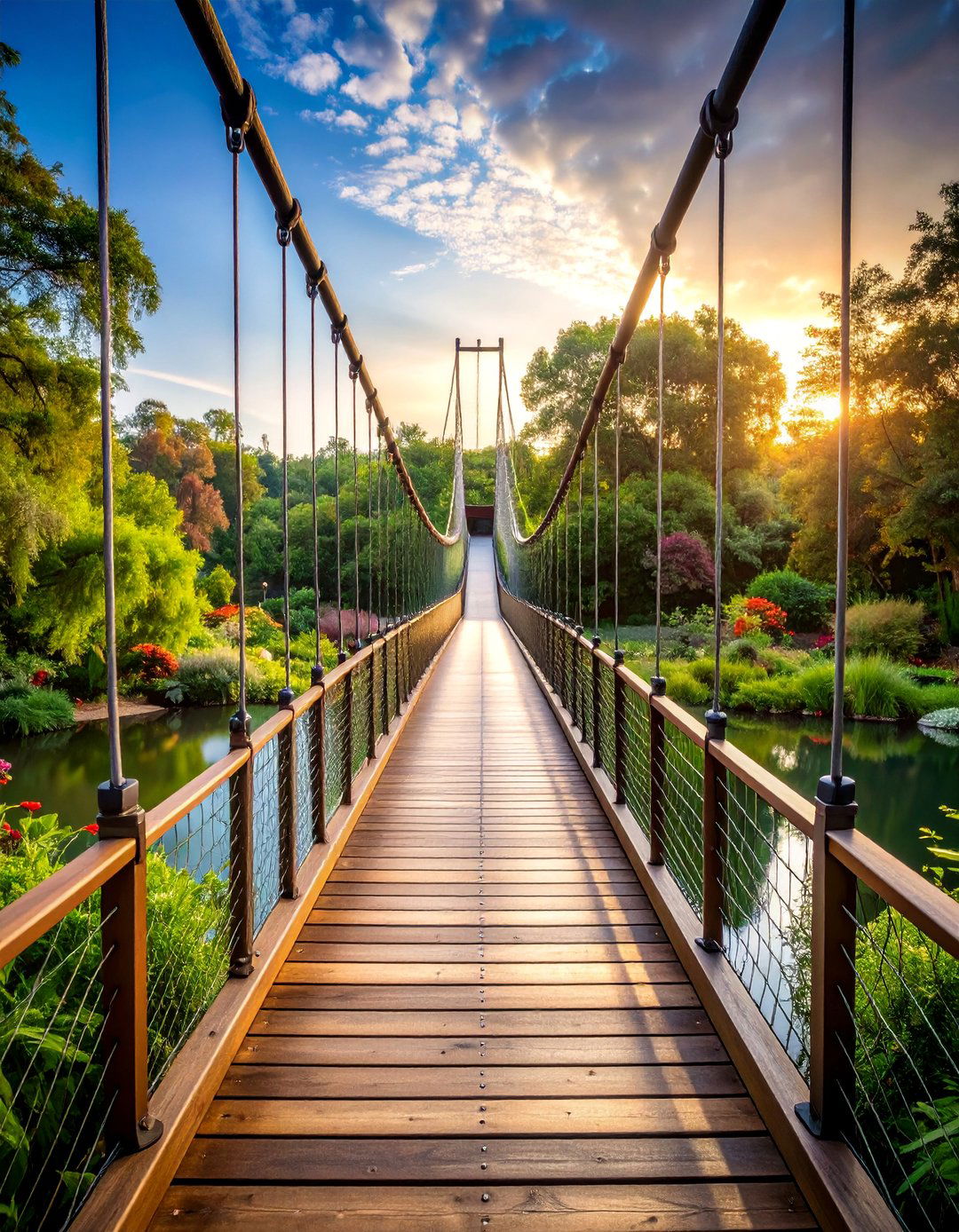
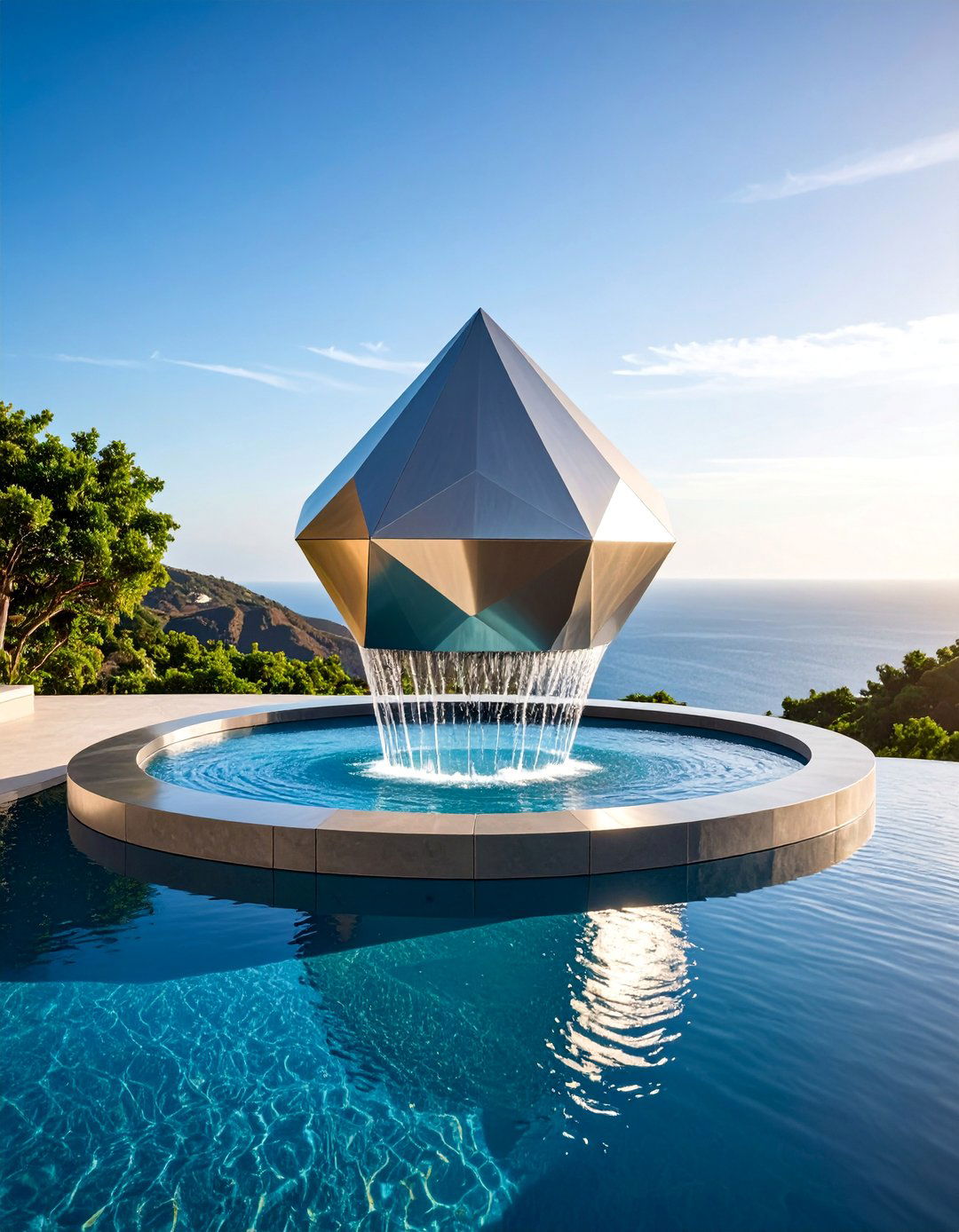


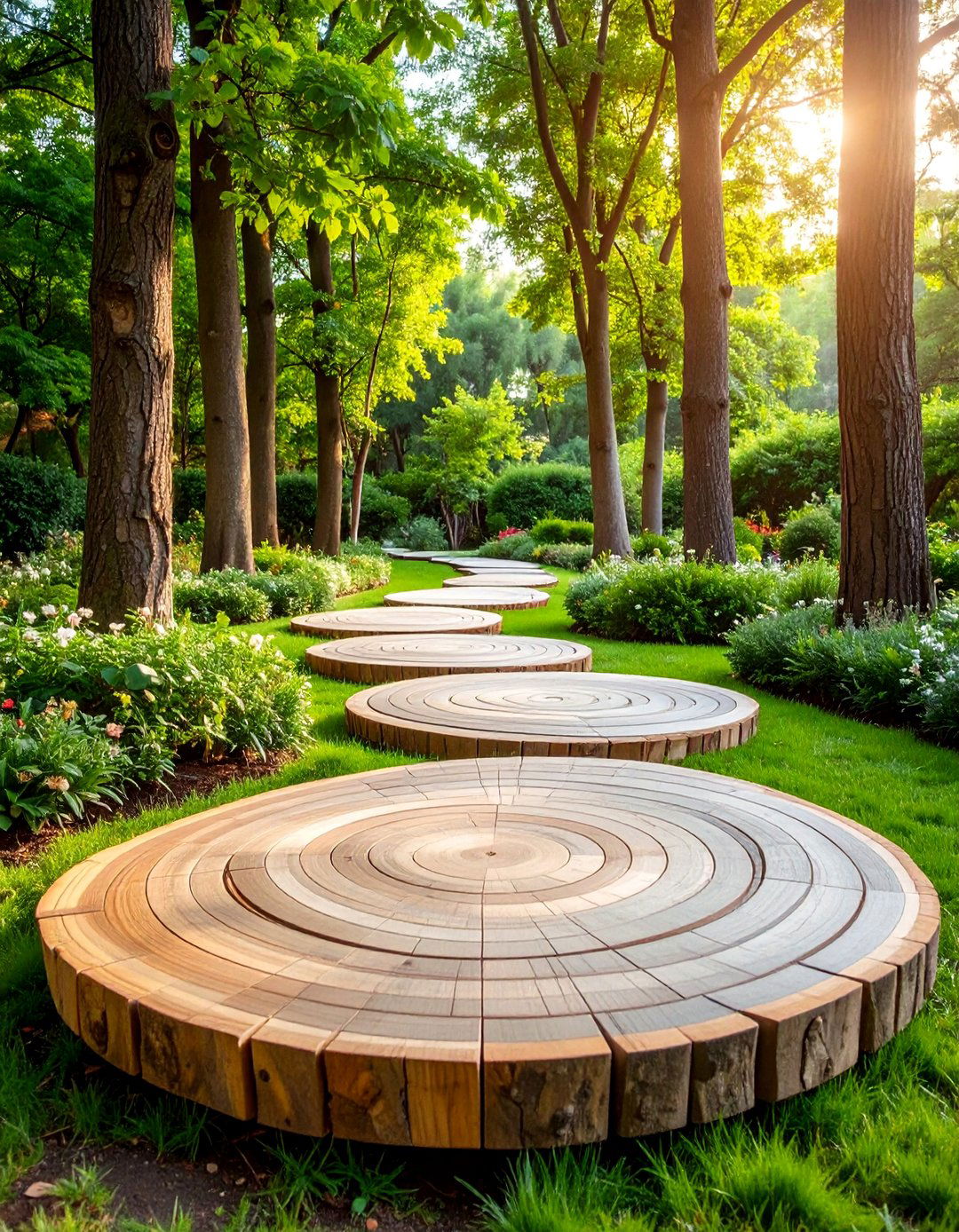
Leave a Reply